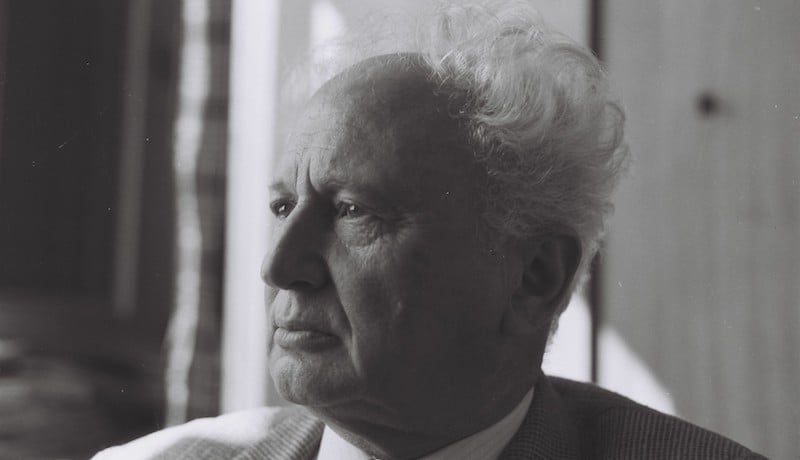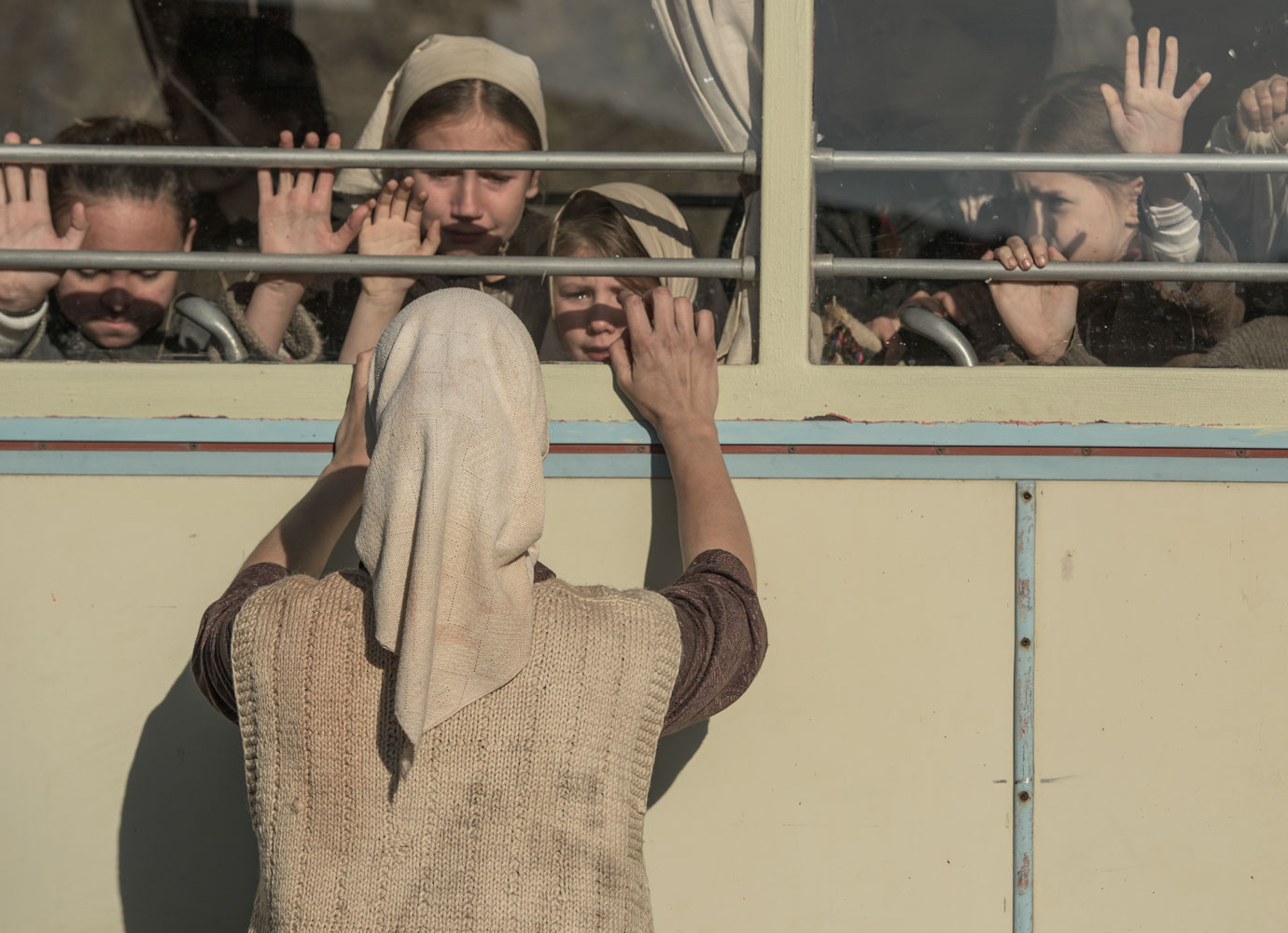How the discovery of a 1941 amateur 8mm camera roll unearthed the history of Warsaw’s ghetto
Warsaw: A City Divided, directed by Eric Bednarski, will be screened on 18-19 October as part of The Calvert Journal Film Festival. Check out the programme and get your tickets here.
From March to November 1941, Alfons Ziołkowski, a 30-year-old Polish merchant and motorcycle-racing champion-turned amateur filmmaker, documented the grim realities of the Warsaw ghetto: the quotidian behavioural resistance, the modes of subsistence, death, and forced compliance. Created in 1940, Warsaw’s Jewish district was the largest ghetto in Nazi-occupied Europe. When Ziołkowski filmed the footage, the ghetto would have reached its highest number of inhabitants. It would, however, quickly dwindle, as between October 1940 and July 1942, nearly 20 per cent of the ghetto’s population died of starvation, diseases, and cold.
At the time, Ziołkowski was probably unaware of the future commemorative significance the 8mm raw footage would acquire after the Holocaust. Indeed, it fell into oblivion in its immediate aftermath. But 80 years later, Polish-Canadian director Eric Bednarski disclosed the exclusive material in his documentary Warsaw: A City Divided (2019), which invites the spectator on a journey through Warsaw on a tram — empty of passengers, but marked with the Star of David — making its way through the capital every 27 January in homage to the victims of Nazi persecution.
The documentary is naked in its intentions: Bednarski interweaves the voices of architects, architectural historians, artists, and survivors with those of historical documents, stock footage, visual reconstructions, and shots of contemporary cityscape to reiterate the intrinsic connection between architecture, collective memory, and self-identity. The documentary seeks to transform the sites of oblivion into the sites of memory, and unveil how the Nazi Pabst plan envisaged the annihilation of Warsaw only to substitute the multicultural metropolis with a provincial German town. Warsaw: A City Divided is a thought-provoking reflection on the importance — and difficulty — of remembering, which strength lies in the harrowing 1941 found footage, and the contrast between the interweaved shots of present-day Warsaw.
Against the backdrop of endless aerial shots of contemporary Warsaw and the archival evidence of its plaintive history, the survivors’ testimonies underscore the unfamiliarity of the resurrected city. Far from burying the memory of the ghetto, or the nearby Treblinka extermination camp, the residents of Warsaw are spurred to jettison moral neutrality and excavate the city’s past through the repositories of remembrance. Appreciative of historic plaques, tombstones, monuments, and boundary markers, Eleonora Bergman, one of the leading authorities on the preservation of Jewish heritage in Poland, nevertheless halts before stepping across the former ghetto border. With it, she wants to demonstrate how the demolition of physical barricades does not necessarily expunge the inherited trauma and the psychological perimeters from one’s unconscious. Even the cordoned-off ghetto itself was divided into two zones, connected at the intersection of Chłodna and Żelazna streets, the crossing of which was instructed to remain as infrequent as possible. A minute later, director Eric Bednarski captures an anonymous man hurriedly crossing the same juncture — his mind and body prove not to be haunted in the same way. The camera is merciless in juxtaposing the seamless functioning of present-day Warsaw. While the painful recent history is embedded in the landscape, it remains unknown for many of its contemporary citizens.
Keen to again highlight the connection between landscape and memory, Bednarski comments on another decision of his: “By drawing attention to little-known German documents, my intention was to illustrate the insidious connections between Nazi ideology and bureaucracy, between seemingly banal urban and spatial restructuring decisions and genocide.” As the documentary revolves around Ziołkowski’s observational footage of the Warsaw Ghetto, it’s important to note that Bednarski inevitably leaves out what was happening elsewhere in the city — more precisely, that there was another district exclusively designated for ethnic Poles, located on the Praga side of Warsaw, and the roles its civilians and authorities played during the Nazi invasion of the city.
While Bednarski sets out with the premise of unearthing the history of the Warsaw Ghetto, one of the, arguably, most pressing questions of the documentary remains unanswered: how did Ziołkowski manage to clandestinely film in the Warsaw Ghetto?
While Bednarski sets out with the premise of unearthing the history of the Warsaw Ghetto, one of the arguably most pressing questions of the documentary remains unanswered. The 1941 shots of children smuggling food, a man dying on the pavement, the watchful eye of Nazi officers, unlike the present-day footage, were taken by someone operating in a hostile, cordoned-off territory — inevitably, one yearns to learn more about the amateur filmmaker operating the camera. Was Ziołkowski granted permission to enter the ghetto as a street vendor? How did he manage to clandestinely record the happenings? Why did the footage never see the light before? While the documentary certainly succeeds in raising questions, it only artfully answers the ones it can, leaving others open-ended.
Undeniably owing a great deal of its success to Ziołkowski’s harrowing film footage of the Warsaw ghetto — a space that had been previously investigated solely through the lens of Nazi propaganda — Bednarski’s film succeeds in being a key contribution to a much larger conversation not only about the Holocaust, but about our relationship to history and the sites of remembrance we inhabit.
Warsaw: A City Divided will be screened on 18-19 October as part of The Calvert Journal Film Festival. Get your tickets here.


